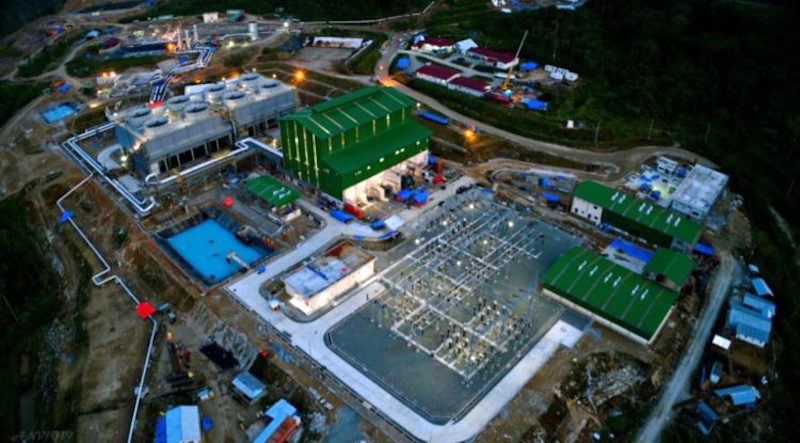The development of the Muara Laboh geothermal plant, West Sumatra
Our peers of geothermal news outlet Panas Bumi News in Indonesia late last year shared the story of Supramu Santosa, the CEO of PT Supreme Energy on the journey to the Muara Laboh, geothermal power plant in West Sumatra, Indonesia. The plant with an installed power generation capacity of 85 MW ..Read more
Our peers of geothermal news outlet Panas Bumi News in Indonesia late last year shared the story of Supramu Santosa, the CEO of PT Supreme Energy on the journey to the Muara Laboh, geothermal power plant in West Sumatra, Indonesia. The plant with an installed power generation capacity of 85 MW was officially inaugurated in February 2020, so about a year ago. Supramu said, from 17 geothermal points in West Sumatra, only Muara Laboh can be used as an energy source for fueling the electricity demand in the Sumatra electricity grid. Since Indonesia was hit by the Asian financial crisis in 1989, only two private companies succeeded in conducting geothermal exploration, one of which is Supreme Energy. Supramu hopes that Supreme Energy’s success in building the Muara Laboh PLTP will trigger the success of geothermal utilization at other points in West Sumatra and in other areas in the country. According to Supramu, the percentage of failure and success in geothermal utilization is balanced, at around 50 perent (50% success or 50% failure), with very large investment cost and a fairly long development process. “Geothermal investment has a very big risk and the development term is very long. From start to production, it will take eight years, that is, if normal, ”said Supramu. Even for the Muara Laboh PLTP, said Supramu, Supreme Energy took around 12 years to the point of commercial operation and connection to the PLN transmission network. “The 12 years long period was carried out from the beginning of the geological study to production. Namely from 2008 to 2019, “he explained. Supramu explained the journey of geothermal utilization in Muara Laboh. In 2008, Supreme Energy conducted a geological and physical study at the site. The results are then submitted to the government (MEMR). “In 2008 we conducted a field study, the results were then submitted to the government for a tender. In 2010 Muara Laboh was tendered. So it took Supreme Energy two years to wait for the tender since submitting the study results, “he explained. According to Supramu, the main obstacle in geothermal development in Indonesia is tariffs. According to him, it took Supreme Energy four years to reach an agreement on the tariff for Muara Laboh and PLN. “In 2012, a price agreement with PLN was only reached. And as long as there is no agreement, Supreme Energy continues to spend money. So within those four years I continued to struggle, “he explained. After the price is reached, he continued, the company then explores with infrastructure development activities. Among them are the road to the mountain to the location of the activity. “Before drilling, we first had to build a road to the mountain. The length of the road is approximately 30 km. For that alone it will cost was around USD 30 million, ”said Supramu. “This activity took three years, especially since the Muara Laboh PLTP had to be built in the mountains,” he explained. After building the road, Supreme Energy then drilled six exploration wells. “The first well worked very well. But the second, third, and fourth wells failed. Meanwhile, the fifth well is small and the sixth well is medium, ”he said. Exploration activities were completed in 2014. Then in 2015 it entered the exploitation stage. Supramu conveyed that from the wells that have been drilled, it is known that Muara Laboh geothermal energy can produce a capacity of around 200 MW. However, because West Sumatra only needs 80 MW, its development was capped at that size and demand. “So only about a third of what was initially planned. But thank God, we are still grateful that now 85 MW have even flowed and been successful during development, “said Supramu. He added that during development, 13 wells were drilled. The financing for one well was up to USD 7 million. So the total investment of Supreme Energy reached USD 587 million dollars or nearly Rp. 9 trillion. “It costs Rp. 9 trillion. But thank God we were successful even though the economic situation. As a gratitude to the people of West Sumatra, I built a hall for sports and meetings, “said Supramu. According to Supramu, apart from the matter of tariffs, geothermal utilization also faces challenges from the surrounding environment, namely the resistance of the people who do not understand the value of geothermal. As is known, the Muara Laboh PLTP has officially operated since last December 2019. For stage 2 of development, the company is still negotiating a price with PLN. The operation of the Muara Laboh PLTP further adds to the reliability of electricity supply in the West Sumatra region. Electricity from this PLTP can power up to 340 thousand households. Muara Laboh PLTP is managed by PT Supreme Energy Muara Laboh (SEML), a joint venture company PT Supreme Energy, ENGIE, and Sumitomo Corp. Source: Panas Bumi News


















